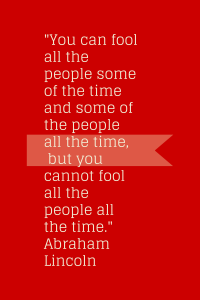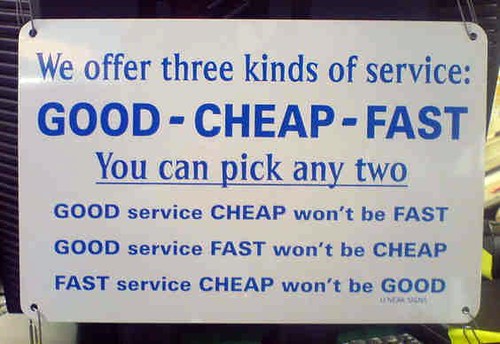A few weeks ago I came across a blog post with a headline that said something like “Why my business is getting off Facebook immediately.” Naturally, I was intrigued. But then I read the article, which told me the many reasons why it would be stupid for him or anybody to leave Facebook, saying things such as: Yes, I want to get off the fastest growing social network that has 800 million readers and counting.
The article, awash is sarcasm, was designed to make readers feel stupid for considering leaving Facebook.
I had been drawn in a headline that I didn’t realize was sarcastic until I read the blog post—a prime example of bait and switch. I felt angry and insulted that the author thought that anybody considering getting off Facebook was stupid.
And then last week, I came across this article on Ragan.com: 31 terms that will complicate your writing. The headline is not sarcastic, but the article is. However, the article is written pretty badly—I was confused as were many other readers as evidenced by the comments. The article, in my opinion, does not work at all.
I asked Brad Phillips, author of the Mr. Media Training blog, what he thought about using sarcasm in professional communication. Here’s what he said:
The challenge is to make sure people don’t take a comment you meant sarcastically as a straightforward, more serious one. Therefore, I try to always either preface a sarcastic comment with an obviously absurd rhetorical question or put it in italics to make clear that it stands apart from the rest of the post.
Exactly. Your reader or audience has to understand you are being sarcastic. If not, there will be misunderstanding and in essence, a lack of communication.
When you decide to use sarcasm, you run three big risks:
1. You risk irritating or even alienating your reader
According to The Complete Idiot’s Guide to Clear Communication by Kris Cole, sarcasm inhibits communication: “Sarcasm in fact is in the same league as name-calling, ridiculing and shaming; and it leads to the same results.”
In intra-personal relationships, sarcasm can be extremely damaging. According to the post The Damage of Using Sarcasm in Workplace Communication by Skip Weisman:
There is no positive upside to using sarcasm. It offers only short-term positive impact for the sarcastic person whose ego may get a boost by putting others down in this manner.
Now, it will be couched in the context of humor and trying to be funny. Yet, that humor comes at the expense of someone else.
In essence, your sarcasm is a put-down to your audience, which can certainly lead to irritation and alienation.
2. You risk being misunderstood
Because sarcasm is a type of passive-aggressive communication — where you say one thing but mean another — there is a very good chance that your meaning will be misconstrued or lost.
It may be challenging for your readers to know that you are being sarcastic and as Brad Phillips said above, they may think you are being serious when in fact you are not.
Because sarcasm is often dependent on tone, and it is hard to express tone in writing, you will be forced to use devices like quotation marks or strike-throughs to make your meaning clear.
3. Your risk seeming ethnocentric and culturally insensitive
Sarcasm does not travel well across cultures. While American culture tends to be very sarcastic, other cultures are not. And even within the U.S., there are regional differences. According to The Science of Sarcasm? Yeah, Right in Smithsonian Magazine:
Northerners also were more likely to think sarcasm was funny: 56 percent of Northerners found sarcasm humorous while only 35 percent of Southerners did. The New Yorkers and male students from either location were more likely to describe themselves as sarcastic.
Would you ever write a sarcastic white paper or case study? Probably not. Why? Because you think of white papers and case studies as serious documents, intended to share information and/or communicate a finding. Instinctively, we avoid sarcasm in “serious” communications. And many people don’t see blogging on the same level as other, more formal, writing.
The truth is that sarcasm is often used as a distancing technique, and it can be extremely corrosive to clear communication. You should avoid it in business blogging.
How do you feel about sarcasm in business blogging? Do you use it? Do you avoid it?
Deborah Brody writes and edits anything related to marketing communications. Most blog posts are written under the influence of caffeine.






